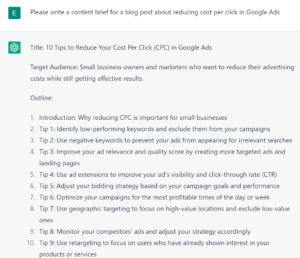Updated on February 18, 2021, to include new information.
Are you looking to build brand awareness, bring more customers to your website, and increase sales? One of the most fundamental ways to do this is by looking at the marketing funnel, which helps meet your customers’ needs at every step of the buying process.
Every time a customer makes a purchase, they go through similar marketing funnel stages to determine what they want to buy and, eventually, where they want to buy it. By understanding these stages, you can determine what content areas you already cover and find new places to build additional content. The holes you find in your marketing funnel content bring new opportunities to attract potential customers and, with it, new sales.
The Four Stages of the Marketing Funnel
The marketing funnel is broken out into four stages:
- Awareness: The user identifies a need or becomes aware of a product or service.
- Interest: The user is trying to find answers to their questions and consider different options. They will be comparing your website against your competitors.
- Desire: The user narrowed down their options and is looking for proof that will help them validate their purchasing decision.
- Action: The user purchases the item and/or service from your website.
A great way to evaluate your content along your customer’s purchase journey is through keyword research. Go through each stage in the marketing funnel and see what kind of keywords or topics related to your product or services users will search for in each one. From here, you’ll be able to uncover any content gaps and determine if you need to make additions or edits to your website.
Awareness: Top of the Marketing Funnel
Imagine you are an online bicycle retailer, and a prospecting customer in Seattle is looking for a new commuter bike. They might start their search with some terms like this:
- road bikes
- commuter bicycles
- commuter bikes
- online bike sales
These are some basic terms that people use when starting a search. You want to make sure that you have quality content that can give users the information they are looking for so that they’re able to find your website and your content with ease.
Awareness content can live in the form of blog posts, YouTube videos, online ads, social media, and so on. The goal of this content is to help the user become aware of your brand and your product or service offering.
Interest: Middle of the Marketing Funnel
Now the user has a little more information about bicycles, but they still have to figure out which is the best for their needs. Their search likely starts to look like this:
- best bikes for commuting
- bike commuting in seattle
- bike commuting in the rain
- commuter bikes vs road bikes
- rain gear for bicycles
- types of commuter bikes
- commuter bikes reviews
- commuter bike videos
You can see here that the user is getting a little more focused, but they haven’t made any decisions. You can help give them more information via pages on your website, blog posts, or YouTube videos. You might also develop guides that offer your expertise in the subject area and, in turn, help the user narrow their search to better align with their needs.
Be sure to pay close attention to your competitors here. If you notice that they’ve built out specific guides or tutorials, you should consider mimicking their approach.
Desire: Middle of the Marketing Funnel
At this point, the user has a clear understanding of what they want. Now they will need to take their desire and turn it into a decision about where their dollars will be spent. To do this, they’re going to look for information about the purchasing process, such as shipping costs, shipping times, store reviews, discounts, and coupons.
Their searches may look like this:
- [Brand name] shipping costs
- [Brand name] shipping times
- [Brand name] store locations
- [Brand name] Seattle
- [Brand name] coupons
You should have your product and category pages optimized for these long-tailed searches. This will allow the customer to find what they are looking for and help them make the final decision with ease.
It’s vital that the user does not experience any hiccups, such as unclear or inaccurate information. The smallest detail can cause the user to go to your competitor.
Action: Bottom of the Marketing Funnel
Congrats! At this point, the customer is ready to complete their purchase, and they have decided that your website has what they need.
You will want to make sure that your checkout process is simple and easy to complete. Review each step to make sure you remove any issues standing in the way of a customer trying to make their purchase.
The sales process is an excellent place to run A/B testing to make sure it is optimized to its fullest.
After the Marketing Funnel… Retention
After a purchase has been made, your brand’s relationship with this user doesn’t stop there. At this time, the customer might be looking for more information about accessories for their new bike or maintenance tips. Make sure you have content that includes accessories and other related services:
- bike tuneups
- cycling rain gear
- how to fix a flat tire
- bicycle tire repair kits
You can also automate emails to be sent after a purchase with related accessories or with a coupon for their next purchase.
What to Do Next
Now that you have evaluated your website as it relates to the entire marketing funnel, you should have uncovered missing or weak content, and identified opportunities to provide the necessary information to cover your customers’ needs at each stage of their purchase journey.
As you add this new content, use analytics to track how the pages are performing and which pages are the most popular. This can guide you in further updates to the site by letting you know what to focus on most.
Want to dive deeper into the content development process for the sales funnel? Check out this post: How to Funnel Users Towards a Conversion.
The post How to Create Content for Every Stage of the Marketing Funnel appeared first on Portent.




